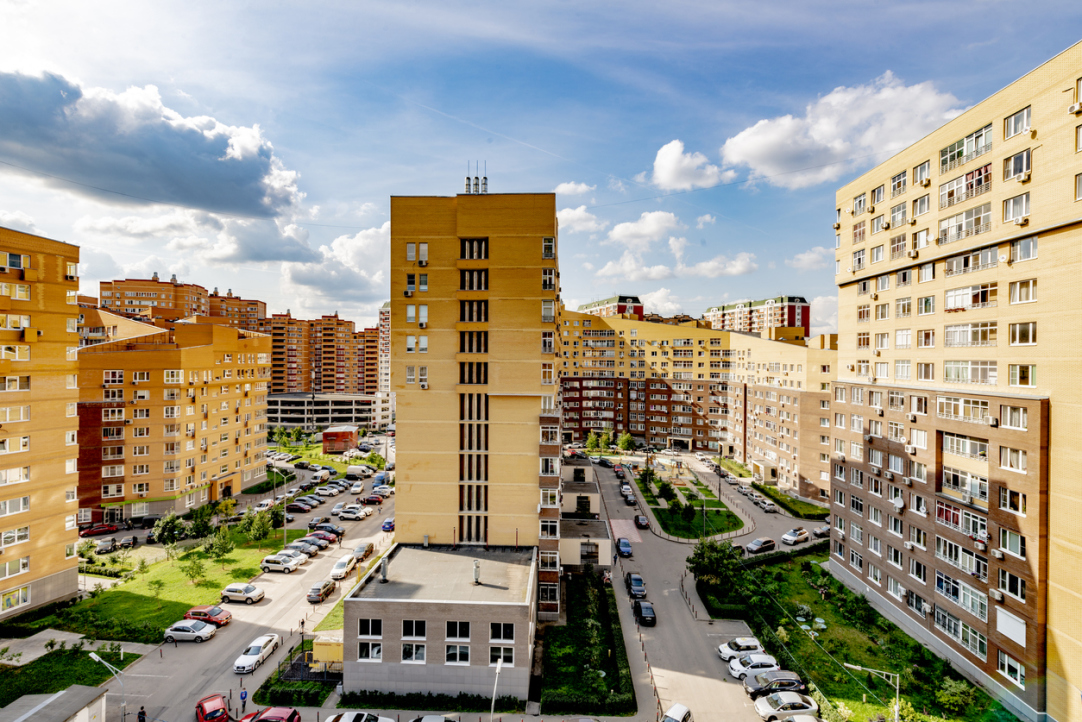Two Worlds of Residents: Car Owners Look at Shared Urban Courtyards Differently from Pedestrians

Researchers from HSE University and St. Petersburg State University of Architecture and Civil Engineering (SPSUACE) used eye tracking to study how residents who own cars and those who don’t look at the shared courtyards of multistorey apartment buildings. The study was published in Urban Forestry & Urban Greening.
In many countries, new urban districts are full of lifeless parking lots and there is almost no greenery. And while urban residents like spending time in green parks, they continue to accept the barren courtyards of new housing developments.
The study by HSE University and SPSUACE used eye-tracking technology to study how residents perceive the shared courtyards of apartment buildings.

The researchers took two groups of participants—those who own a car and those who don’t—and showed them images of shared courtyards, asking the subjects to evaluate their attractiveness. A total of 20 car owners and 20 people who did not own a car took part in the study.
The researchers found that the longer people looked at trees (greenery), the more attractive the courtyards seemed to them. And vice versa: the longer they looked at parking lots, the more unattractive they found the area. Computational data analysis confirmed the correlation between the time spent looking at trees and the courtyards’ attractiveness, with an opposite negative effect from looking at parking lots. On average, a twofold increase in attention to greenery makes a courtyard about 30% more attractive.
Car owners found courtyards full of parking spaces and no trees less unappealing than those who don’t own a car. But among car owners, the correlation between the time spent looking at trees and their evaluation of a courtyard as particularly attractive turned out to be the strongest. Greenery impacted car owners 33% stronger than participants without cars.

Vasily Klucharev, the project’s coordinator and Director of the HSE Institute for Cognitive Neuroscience
‘The results demonstrate an internal conflict in urban residents who own a car: they are interested in additional parking spaces, but still value greenery highly. Resolving such internal tensions in various groups of urban residents will likely help return cosy green courtyards to our cities.’

Nadezhda Kerimova, co-author of the paper, Associate Professor at the Department of Architectural Design, SPSUACE
‘Architects often underestimate the importance of green spaces during construction planning. Together with an HSE laboratory, we used a contemporary method of eye tracking to study the urban residents’ attention. Our results have confirmed that the more attention people pay to green spaces, the more positively they evaluate urban districts. Such studies are extremely important for changing the philosophy of architects and developers, for understanding the preferences of residents and potential conflicts between different groups of residents.’
‘In our studies, we are trying to get to the bottom of why we accept the concrete of modern construction and forget that green spaces in cities are necessary, first of all, for our health. Trees decrease air pollution, protect us from noise and heat, decrease the chances of cardiological and psychological disorders. Furthermore, Canadian researchers recently proved that having ten more trees in a city block improves health perception in ways comparable to being seven years younger. That’s why we will make sure to continue our studies of how green space development impacts people,’ added Vasily Klucharev.
See also:
Scientists Uncover Why Consumers Are Reluctant to Pay for Sugar-Free Products
Researchers at the HSE Institute for Cognitive Neuroscience have investigated how 'sugar-free' labelling affects consumers’ willingness to pay for such products. It was found that the label has little impact on the products’ appeal due to a trade-off between sweetness and healthiness: on the one hand, the label can deter consumers by implying an inferior taste, while on the other, it signals potential health benefits. The study findings have been published in Frontiers in Nutrition.
Internal Clock: How Heart Rate and Emotions Shape Our Perception of Time
Our perception of time depends on heart rate—this is the conclusion reached by neuroscientists at HSE University. In their experiment, volunteers watched short videos designed to evoke specific emotions and estimated each video's duration, while researchers recorded their heart activity using ECG. The study found that the slower a participant's heart rate, the shorter they perceived the video to be—especially when watching unpleasant content. The study has been published in Frontiers in Psychology.
Scientists Develop New Method to Detect Motor Disorders Using 3D Objects
Researchers at HSE University have developed a new methodological approach to studying motor planning and execution. By using 3D-printed objects and an infrared tracking system, they demonstrated that the brain initiates the planning process even before movement begins. This approach may eventually aid in the assessment and treatment of patients with neurodegenerative diseases such as Parkinson’s. The paper has been published in Frontiers in Human Neuroscience.
HSE Scientists Test New Method to Investigate Mechanisms of New Word Acquisition
Researchers at the HSE Centre for Language and Brain were among the first to use transcranial alternating current stimulation to investigate whether it can influence the acquisition of new words. Although the authors of the experiment have not yet found a link between brain stimulation and word acquisition, they believe that adjusting the stimulation parameters may yield different results in the future. The study has been published in Language, Cognition and Neuroscience.
HSE Discusses Urban Development Prospects at the Vysokovsky Forum
The annual Vysokovsky Forum, organised by the Faculty of Urban and Regional Development, was held at HSE University. Officials, business representatives, teachers, and experts gathered to discuss whether development projects should be adapted to residents' needs, whether New Moscow could become a new centre of attraction, and what benefits HSE will gain from launching a new academic department in partnership with A101 Group.
When Thoughts Become Movement: How Brain–Computer Interfaces Are Transforming Medicine and Daily Life
At the dawn of the 21st century, humans are increasingly becoming not just observers, but active participants in the technological revolution. Among the breakthroughs with the potential to change the lives of millions, brain–computer interfaces (BCIs)—systems that connect the brain to external devices—hold a special place. These technologies were the focal point of the spring International School ‘A New Generation of Neurointerfaces,’ which took place at HSE University.
How the Brain Responds to Prices: Scientists Discover Neural Marker for Price Perception
Russian scientists have discovered how the brain makes purchasing decisions. Using electroencephalography (EEG) and magnetoencephalography (MEG), researchers found that the brain responds almost instantly when a product's price deviates from expectations. This response engages brain regions involved in evaluating rewards and learning from past decisions. Thus, perceiving a product's value is not merely a conscious choice but also a function of automatic cognitive mechanisms. The results have been published in Frontiers in Human Neuroscience.
Electrical Brain Stimulation Helps Memorise New Words
A team of researchers at HSE University, in collaboration with scientists from Russian and foreign universities, has investigated the impact of electrical brain stimulation on learning new words. The experiment shows that direct current stimulation of language centres—Broca's and Wernicke's areas—can improve and speed up the memorisation of new words. The findings have been published in Neurobiology of Learning and Memory.
HSE Researchers Discover Simple and Reliable Way to Understand How People Perceive Taste
A team of scientists from the HSE Centre for Cognition & Decision Making has studied how food flavours affect brain activity, facial muscles, and emotions. Using near-infrared spectroscopy (fNIRS), they demonstrated that pleasant food activates brain areas associated with positive emotions, while neutral food stimulates regions linked to negative emotions and avoidance. This approach offers a simpler way to predict the market success of products and study eating disorders. The study was published in the journal Food Quality and Preference.
HSE Neurolinguists Create Russian Adaptation of Classic Verbal Memory Test
Researchers at the HSE Centre for Language and Brain and Psychiatric Hospital No. 1 Named after N.A. Alexeev have developed a Russian-language adaptation of the Rey Auditory Verbal Learning Test. This classic neuropsychological test evaluates various aspects of auditory verbal memory in adults and is widely used in both clinical diagnostics and research. The study findings have been published in The Clinical Neuropsychologist.


